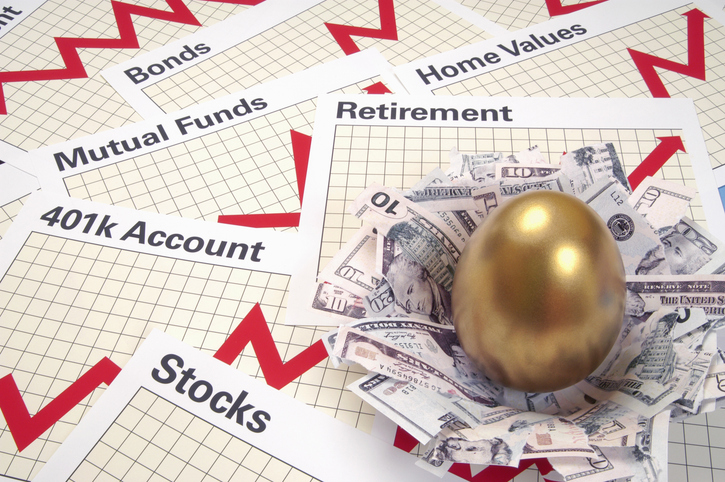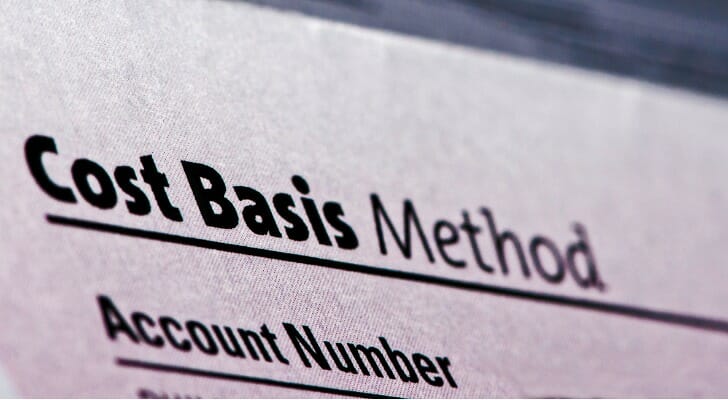The cost basis of an asset is important to you for two primary reasons: tax planning and investment planning. These two reasons are related because only with the proper investment planning can you own a tax-efficient portfolio. You need to understand cost basis in order to plan the investment horizons of the various securities in your portfolio to lower your tax liability. It’s important to know the tax effect of the different types of securities in your portfolio to both choose investments and limit the tax hit you take each year. Since cost basis is calculated differently for different types of assets and can be complex, you may want to consult a financial advisor for assistance.
What Is Cost Basis?
Cost basis refers to the original price or cost of an asset purchased by an investor. When calculating capital gains or losses, the cost basis is subtracted from the asset’s sale price to determine the taxable amount. Essentially, your cost basis is like a receipt documenting the purchase price of a financial asset. This applies to a wide range of investments, including stocks, bonds, mutual funds, real estate and other financial instruments.
In addition to the purchase price, cost basis often includes associated expenses incurred during the transaction, such as brokerage fees, transfer taxes and other acquisition costs. Including these additional expenses can increase the cost basis, potentially reducing the taxable capital gain when the asset is sold.
Factors That Influence Cost Basis
Cost basis isn’t static — it can change due to various events related to the asset or the company issuing it. Some common factors that may impact cost basis include:
- Dividends. Certain dividends, such as return-of-capital distributions, can reduce the cost basis of an asset.
- Stock Splits. When a company splits its stock, the cost basis is adjusted to reflect the increased number of shares owned.
- Mergers and Acquisitions. If the company you invested in undergoes a merger or acquisition, the cost basis may be recalculated based on the new entity’s valuation.
- Wash Sales. A wash sale occurs when an investor sells an asset at a loss and repurchases a substantially identical asset within 30 days. This can defer the loss and adjust the cost basis of the new asset.
- Bankruptcies. If a company declares bankruptcy, the cost basis of its securities might need to be adjusted or written off entirely.
Each corporate action has specific rules and calculations to determine its effect on cost basis. For example, stock splits may divide the original cost basis among the newly increased shares, while dividends classified as a return of capital may lower the cost basis incrementally over time.
Accounting Methods and IRS Guidelines
The accounting method you choose for tracking cost basis can also influence its final calculation. The Internal Revenue Service (IRS) recognizes several accounting methods for calculating cost basis, including:
- First In, First Out (FIFO). Assumes the oldest shares are sold first.
- Specific Identification. Allows you to select which shares to sell, providing flexibility in managing taxable gains.
- Average Cost. Commonly used for mutual funds and ETFs, this method calculates the average purchase price of all shares.
It’s essential to adhere to IRS regulations when determining and reporting cost basis. IRS Publication 551 provides detailed guidance on how to calculate and report cost basis for various types of assets, ensuring compliance and accuracy in your tax filings. This resource is particularly valuable when dealing with complex scenarios, such as inherited assets, gifted assets or multiple purchase lots.
Cost Basis of Stocks
You buy 100 shares of a stock for $10 per share. The cost basis, or purchasing price, is $1,000. If you sell the stock at the end of one year for $1,600 or $16 per share, you have a taxable capital gain of $600.
If the stock paid a dividend of $5 per share during that year, the cost basis is changed. In this case, it is $1,000 + $500 = $1,500. The $5 yearly dividend per share has increased the cost basis from the purchase price of $1,000 to $1,500. If you sell the stock for $16 per share, you have a taxable capital gain of $1,600 – $1,500 = $100 instead of $600 if no dividends had been paid. You can use our capital gains calculator to help calculate your taxable gains.
Instead of dividends being paid to you directly by check, you could reinvest them instead. Dividend reinvestment raises the cost basis of stock since you are using the dividends to buy more of the stock.
Cost Basis of Mutual Funds

Cost basis is a more complex issue if you own mutual funds in a taxable account. Mutual funds are required to pay out any gains to shareholders at the end of the year. Those gains are taxable. To calculate cost basis, you add the purchase price of the mutual fund shares plus all reinvested dividends. Like with stock, you can add any fees or commissions you have had to pay to brokerages or financial advisors.
Mutual funds generally provide information to their shareholders regarding cost basis in IRS Form 1099-B. If you sell shares in the mutual fund, the proceeds will be reported. You must report your cost basis so it can offset the proceeds to determine your capital gains or losses. Mutual fund companies keep records concerning your cost basis and you can seek help there.
Cost Basis of Bonds
Bonds are the fixed-income securities in your portfolio. The return on bonds is made up of coupon payments semi-annually or annually plus the return of the purchase price at their maturity. The cost basis of bonds is a concept that is not particularly straightforward. The following is an example of calculating the adjusted cost basis when you own and sell a discount bond. A discount bond is one with a coupon interest rate lower than the going market interest rate.
How to Calculate the Cost Basis of a Bond
Here is a step-by-step guide to calculating the adjusted cost basis of a bond.
- This taxable, corporate bond has a par value of $1,000. It was issued at an coupon rate of 8% paid annually. The bond has 5 years left to maturity. Thus, the face value of the bond or the cost basis is $924.16.
- When you sell the bond, one year has passed and the market interest rate is now 10%. It will be sold in a market where the interest rate is 10%, up from 8% when the bond was issued. You have earned one year’s worth of interest or $80 ($1000 x .08 = $80). But you will sell the bond at a discount since interest rates have risen since you purchased it. This is called a discount bond.
- You earn 10% interest on the bond which is $924.16 x .10 = $92.42. However, only $80 of that was coupon interest ($1000 x .08). The remaining $12.42 is a long-term capital gain ($92.42 – $80.00 = $12.42).
- To calculate the cost basis at the time you sell, you add the capital gains to the initial value of the bond ($924.16 + $12.42 = $936.58).
There are several issues you must address when calculating the cost basis of a bond. One is whether the bond is sold at a premium, a discount or at par. The second is the issue of amortization and in the previous example, the amortization is $12.42 for the first year. The third issue is whether the bond is taxable or tax-exempt.
Cost Basis of Real Estate
The cost basis of real estate is the purchase price plus any expenses you incurred while you have owned the property. Such expenses would be, for example, the appraisal, title insurance and legal fees. These expenses increase the cost basis. Perhaps the largest decrease to the cost basis is depreciation.
In order to calculate the adjusted basis for tax purposes if you are selling the property, you have to add the increases to the original purchase price or cost basis. Then you subtract any decreases to the cost basis and you have the adjusted cost basis at the time of the sale.
If you sell the property for more than the original cost basis or purchasing price, you have to pay capital gains tax on the amount above the purchasing price.
Bottom Line

Finding the cost basis of an asset can be complex because there are lots of exceptions and special situations and circumstances involved. It’s important for the investor to keep extremely good records on every asset in which you have an investment. Keep your trade confirmations. In the case of real estate, keep receipts on all your improvements to the property. Since there are tax implications due to the capital gains tax as well as investing decisions to be made, it may be best to consult a financial advisor and a tax professional.
Tips on Investment Taxes
- Consider working with a financial advisor as you calculate the cost basis of various securities. Finding one doesn’t have to be hard. SmartAsset’s free tool matches you with vetted financial advisors who serve your area, and you can have a free introductory call with your advisor matches to decide which one you feel is right for you. If you’re ready to find an advisor who can help you achieve your financial goals, get started now.
- You can use our investment calculator to compare and contrast possible investments for your portfolio.
Photo credit: ©iStock.com/WilshireImages, ©iStock.com/TK, ©iStock.com/Yozayo
